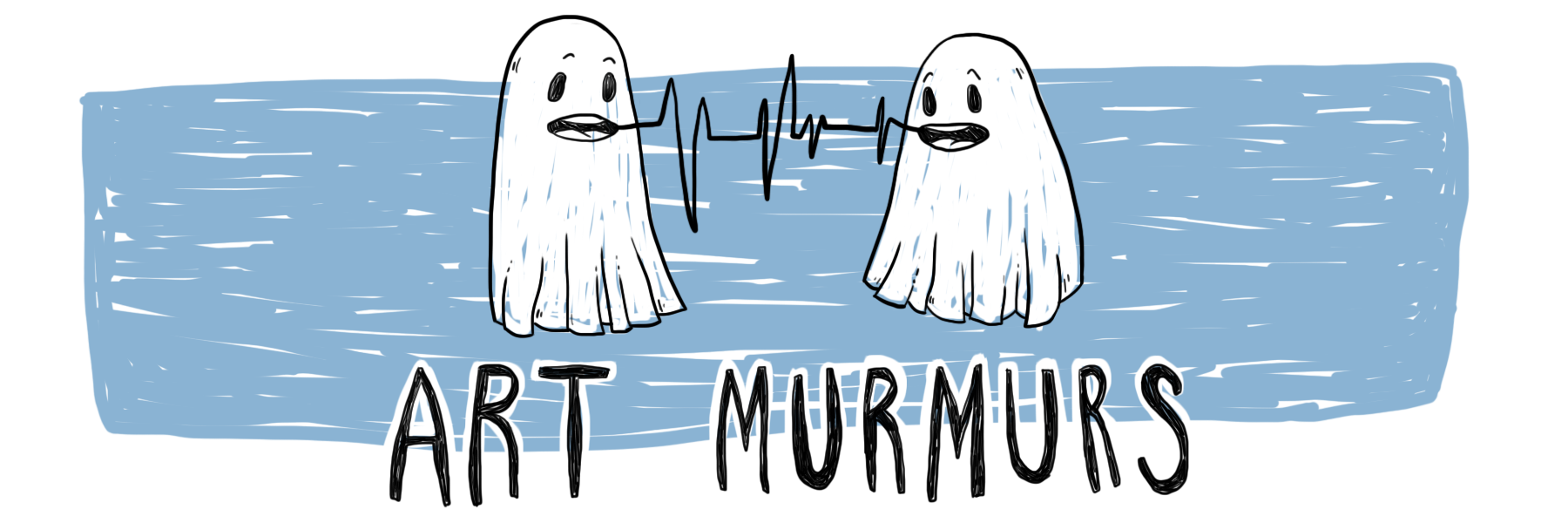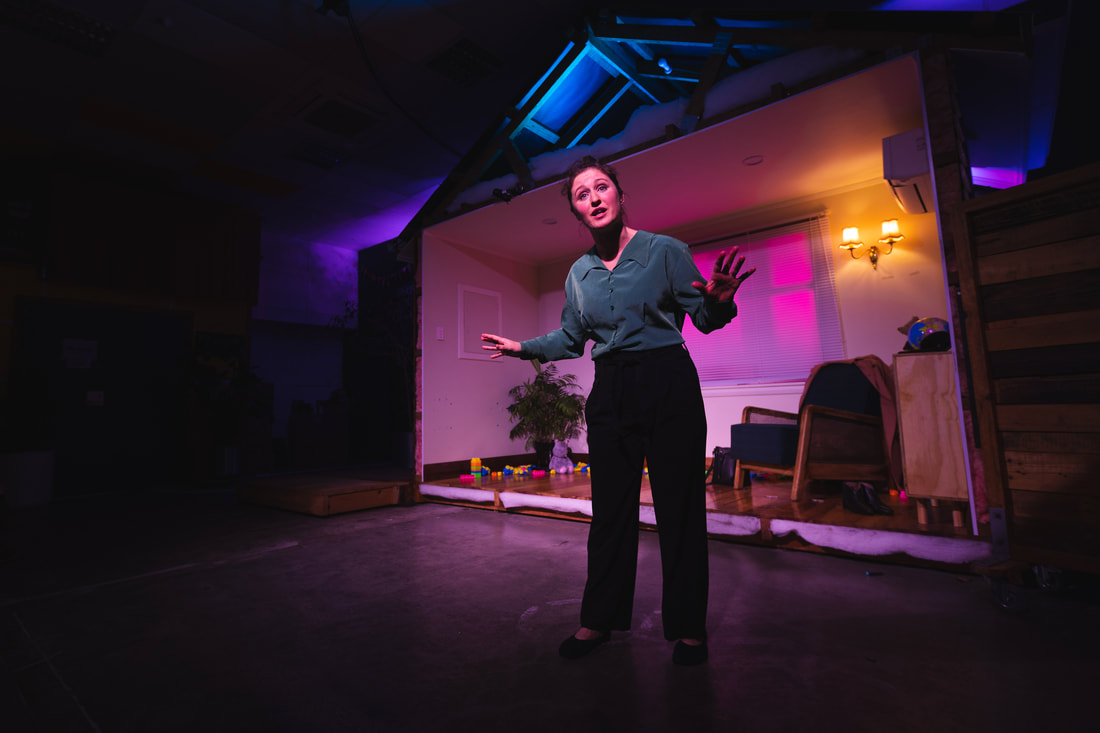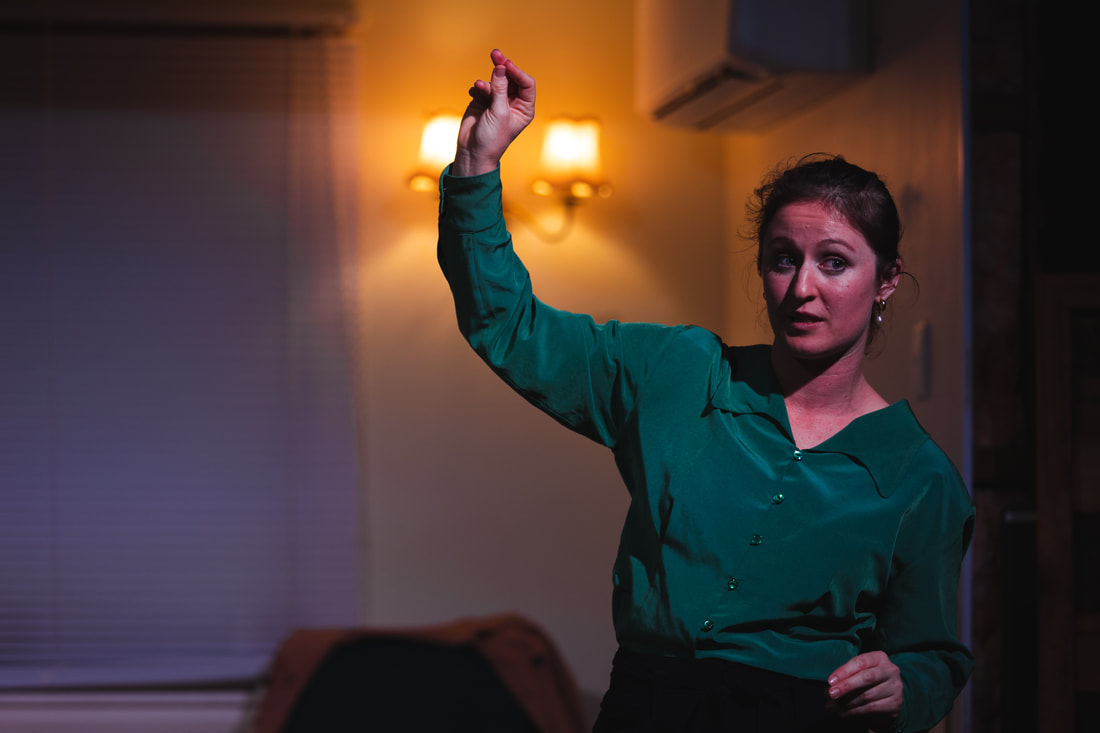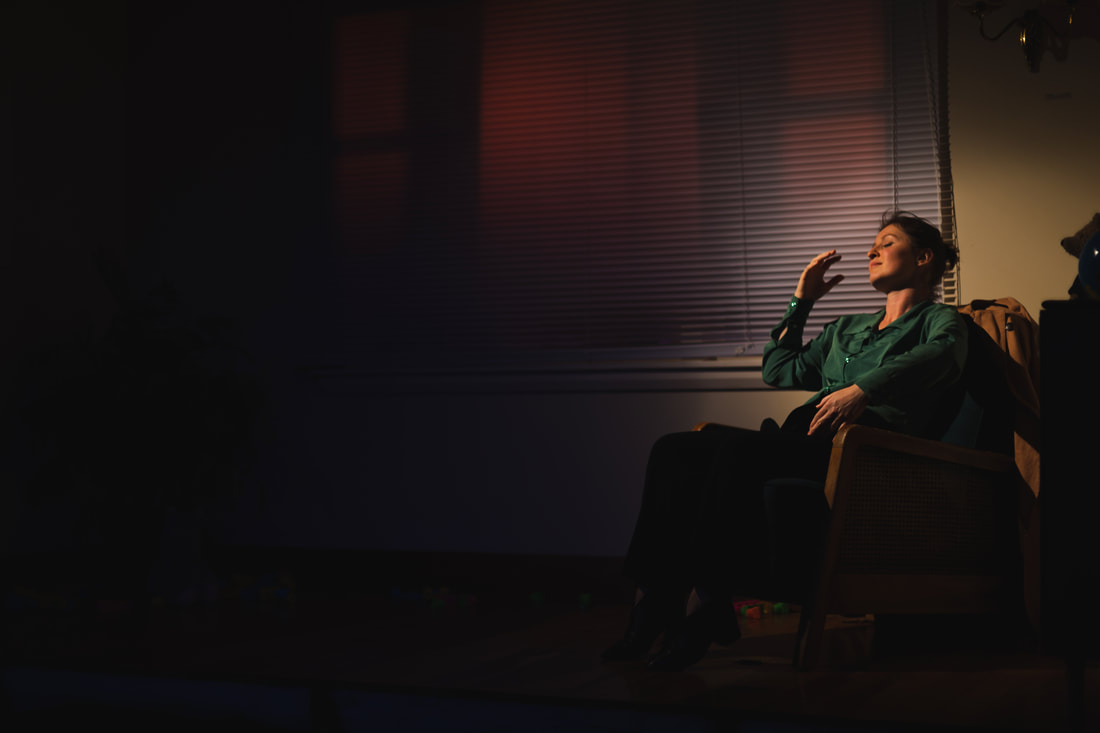Emilie Hope
The lighting design by Rowan McShane leaves a bit to be desired. While this is in a found space and doesn’t have access to a full scale theatre lighting grid, the team did manage to obtain professional lights thanks to Grouse Lighting which linked to a lighting board operated (including sound) by Stevie Hancox-Monk. There are some interesting lighting placements with – in the open roof of the home, behind the house, along the back walls of the venue itself – I wasn’t sure if this was meant to open her world to us or add some other depth to the story. If there is some added depth, I have clearly missed it and I would be open to learning what it is (perhaps leave your comment below this review!). There were bright, primary colours used, to call back to the two young children, Lianne and Danny, but the patterns aren’t clear. I am glad McShane stayed away from the disgustingly binary colours of pink and blue to represent the children. There is a moment when I notice flickering pink and blue lights when the main character is playing with her children – in this case I believe it is used simply to represent light and dark of an explosion in a colourful and fun way. If there were more moments like this, my comments would be moot. The contrast as we slip from more naturalistic lighting into more stylised colouring as we enter the memories of the main character interacting with her children seem standard and I’m not sure if there is anything in the design that isn’t practical or is simply pretty lighting around a robust script.
It also occurs to me about halfway through the show that there is no music, merely a few simple sound cues here and there. Could a soundscape or art music have helped us along this show? Perhaps. It could also have been an expensive addition to a show that still manages to hold itself without the sound.
Martin is impeccable. Unafraid of the audience, she holds and returns our gaze, and once even asks a question and expects a response (which she gets). Playwright Dennis Kelly has said “There are only two characters in this play: the actor and the audience.” It’s pivotal that Martin, with the direction of Kiesel, build a rapport with the audience and keep them engaged throughout the play, otherwise there would be no holding us to the end where the gory details are spelled out for us. Martin and Kiesel succeed. Martin does this simply by really looking, speaking directly to us, and positioning herself along the stage to that equal time is spent with each section of the audience – important when sightlines can become compromised the further back you sit as the audience are not sitting in a pitched seating arrangement. In a particular moment where she explains she needs the fire of action, of doing something with her life, otherwise she would spend the rest of her days in her pyjamas on the couch eating crisps watching Broadchurch gets a laugh from the audience in general, with a few members in the front row exploding with a particular style of laughter that comes from truth and surprise. This is probably their definition of a good night and they just got read to filth by this character. Their laughter is louder and lasts longer than the general audience, causing another smattering of laughter. These are the special moments of live theatre – the spontaneous community that is formed when watching a show. And due to Martin’s performing experience, she waits and observes this bunch with a somewhat disapproving smile, making the entire moment funnier. We wouldn’t have had this moment had the rapport not been built and a trust given between audience and performer. The brashness of the character wins the audience over and this abrasive, crass, intelligent woman quickly begins to feel like someone we know, thanks to Martin.
Her anger interests me greatly. There seems to be an expectation that when women are angry, we cry. The tears just fall out of our eyes, we can’t help it, and we might quickly swipe at our cheeks in a way that both brings attention to this fact and shows we want to hide it. Actors who succeed in this are quickly given nominations, win awards, and are critically acclaimed. However, there is something deeply unsettling, in the best way, if a woman is angry and we see no tears. Martin’s eyes may have welled (it’s hard to tell) but certainly no tears fell. Fury, absolute fury, commands this character and Martin. And I think there is something to be said about this almost reserved performance that actually makes it feel more honest, more real, and therefore more unnerving, perhaps simply because it is so underrepresented. Emotions are complex and present themselves differently, and what a powerhouse of a performer is Martin.
Girls & Boys is perhaps one of the strongest productions this year thus far in Wellington theatre. I encourage you to go see it if you can – it’s on until the 5th of June. Grab your tickets here.








